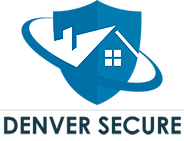IP Cameras Default Passwords Directory
Below is a directory of 50+ manufacturer's default passwords.
Note: Change Default Passwords
Leaving default passwords is dangerous and makes it easy for even inexperienced attackers to take control, brick or watch your video feed. Worse, since many cameras are made available over the Internet (often because of another risky practice, port forwarding or because the manufacturer defaulted UPnP on), the cameras may be attacked from anywhere in the world.
Manufacturer List Default Passwords
While IPVM strongly recommends using complex passwords, users may still need to know defaults when cameras are first configured or factory defaulted, and finding these credentials can be aggravating, with many manufacturers burying them in PDF manuals or not documenting them at all.
For each manufacturer, we list the username first and pasword section in the following format: username/password. Where manufacturers have multiple defaults, or differences in newer/older firmwares, we have noted it:
- ACTi: admin/123456 or Admin/123456
- Amcrest: admin/admin
- American Dynamics: admin/admin or admin/9999
- Arecont Vision: none
- AvertX: admin/1234
- Avigilon: Previously admin/admin, changed to Administrator/<blank> in later firmware versions
- Axis: Traditionally root/pass, new Axis cameras require password creation during first login (note that root/pass may be used for ONVIF access, but logging into the camera requires root password creation)
- Basler: admin/admin
- Bosch: None required, but new firmwares (6.0+) prompt users to create passwords on first login
- Brickcom: admin/admin
- Canon: root/camera
- Cisco: No default password, requires creation during first login
- Dahua: Requires password creation on first login. Previously this process was recommended but could be canceled; older models default to admin/admin
- Digital Watchdog: admin/admin
- DRS: admin/1234
- DVTel: Admin/1234
- DynaColor: Admin/1234
- FLIR: admin/fliradmin
- FLIR (Dahua OEM): admin/admin
- FLIR (Quasar/Ariel): admin/admin
- Foscam: admin/<blank>
- GeoVision: admin/admin
- Grandstream: admin/admin
- Hanwha: admin/no default password, must be created during initial setup
- Hikvision: Firmware 5.3.0 and up requires unique password creation; previously admin/12345
- Honeywell: admin/1234
- IndigoVision (Ultra): none
- IndigoVision (BX/GX): Admin/1234
- Intellio: admin/admin
- Interlogix admin/1234
- IQinVision: root/system
- IPX-DDK: root/admin or root/Admin
- JVC: admin/jvc
- Longse: admin/12345
- Lorex: admin/admin
- LTS: Requires unique password creation; previously admin/12345
- March Networks: admin/<blank>
- Mobotix: admin/meinsm
- Northern: Firmware 5.3.0 and up requires unique password creation; previously admin/12345
- Oncam: admin/admin
- Panasonic: Firmware 2.40 and up requires username/password creation; previously admin/12345
- Pelco: New firmwares require unique password creation; previously admin/admin
- Pixord: admin/admin
- Q-See: admin/admin or admin/123456
- Reolink: admin/<blank>
- Samsung Electronics: root/root or admin/4321
- Samsung Techwin (old): admin/1111111
- Samsung (new): Previously admin/4321, but new firmwares require unique password creation
- Sanyo: admin/admin
- Scallop: admin/password
- Sentry360 (mini): admin/1234
- Sentry360 (pro): none
- Sony: admin/admin
- Speco: admin/1234
- Stardot: admin/admin
- Starvedia: admin/<blank>
- Sunell: admin/admin
- SV3C: admin/123456
- Swann: admin/12345
- Trendnet: admin/admin
- Toshiba: root/ikwd
- VideoIQ: supervisor/supervisor
- Vivotek: root/<blank>
- Ubiquiti: ubnt/ubnt
- Uniview: admin/123456
- W-Box (Hikvision OEM, old): admin/wbox123
- W-Box (Sunell OEM, new): admin/admin
- Wodsee: admin/<blank>
Strong Password Measures Increasing
Several manufacturers, including Hanwha, Hikvision, and Panasonic, now require unique passwords by default, with most requiring a mix of upper and lowercase letters, numbers, and special characters.
Others do not require unique passwords, but prompt users to set strong passwords when logging into the camera. For example, Bosch displays the message when logging into cameras using firmware 6.20 and above. Dahua includes a similar prompt.
Using Default Passwords
The use of default passwords in production systems is considered poor practice. At the very least, all surveillance network devices, including cameras, clients, and servers, should be changed from the defaults with strong passwords, documented in a secure location. This prevents access to the network using simple password guessing, requiring a more skilled attacker and more complex methods.
However, there are many who still claim default passwords are fine, especially if the surveillance system is on a dedicated network, without access to other client systems. Doing so may also make it easier for techs to access cameras, but anyone with access to the network (authorized or not) may use the default password to access cameras.
Real World Risk: Mirai Botnet Use of Default Passwords
Waves of unprecedented botnet attacks against major Internet sites have been driven by hacked video surveillance devices that make use of default passwords plus telnet access. This is a powerful example of why default passwords should not be used nor should they be allowed to be used after setup.
